Brand marketers do not need another acronym; they need a paradigm shift in thinking. Key Opinion Customers (KOC) are often interpreted as Micro or Longtail-KOLs, and thus, many brands are developing strategies around a poor interpretation of a fundamental concept. Every brand has KOC. It’s what brands do or don’t do to leverage KOC that makes the difference. And that is why we created this in-depth guide to KOC Marketing in China.
The importance of KOC marketing comes down to two primary benefits; KOC increase customer lifetime value (LTV) and lower customer acquisition costs (CAC) by combining loyalty, community, and advocacy often demonstrated through word-of-mouth (WOM) and user-generated content (UGC) that drives brand awareness and sales among their intimate circle of influence, which is primarily composed of family, friends, and colleagues.
Today’s consumers are more knowledgeable and discriminating than those of the past—and constantly connected to the Internet. With online access to detailed product information, price comparisons, user reviews, and the recommendations of “friends” on social media sites, they can cut through marketing hyperbole and make informed buying decisions. And if they’re not happy with their purchases or experiences, they can spread their negative opinions quickly and broadly online, creating PR nightmares that some businesses never fully recover from. But if your customers are passionate about your company’s products and services, they can spread the love just as easily. – BCG
KOC are Your Customers
Honestly, the term “Key Opinion Customer” simply provides a way to rethink and relabel brand advocates. The application of the concept can be distilled down to compelling as much organic advocacy as possible. The explicit purpose of any KOC initiative is to elicit specific high-value actions from certain customers. But truly, the goal brands must aim for is to turn all customers into KOC.
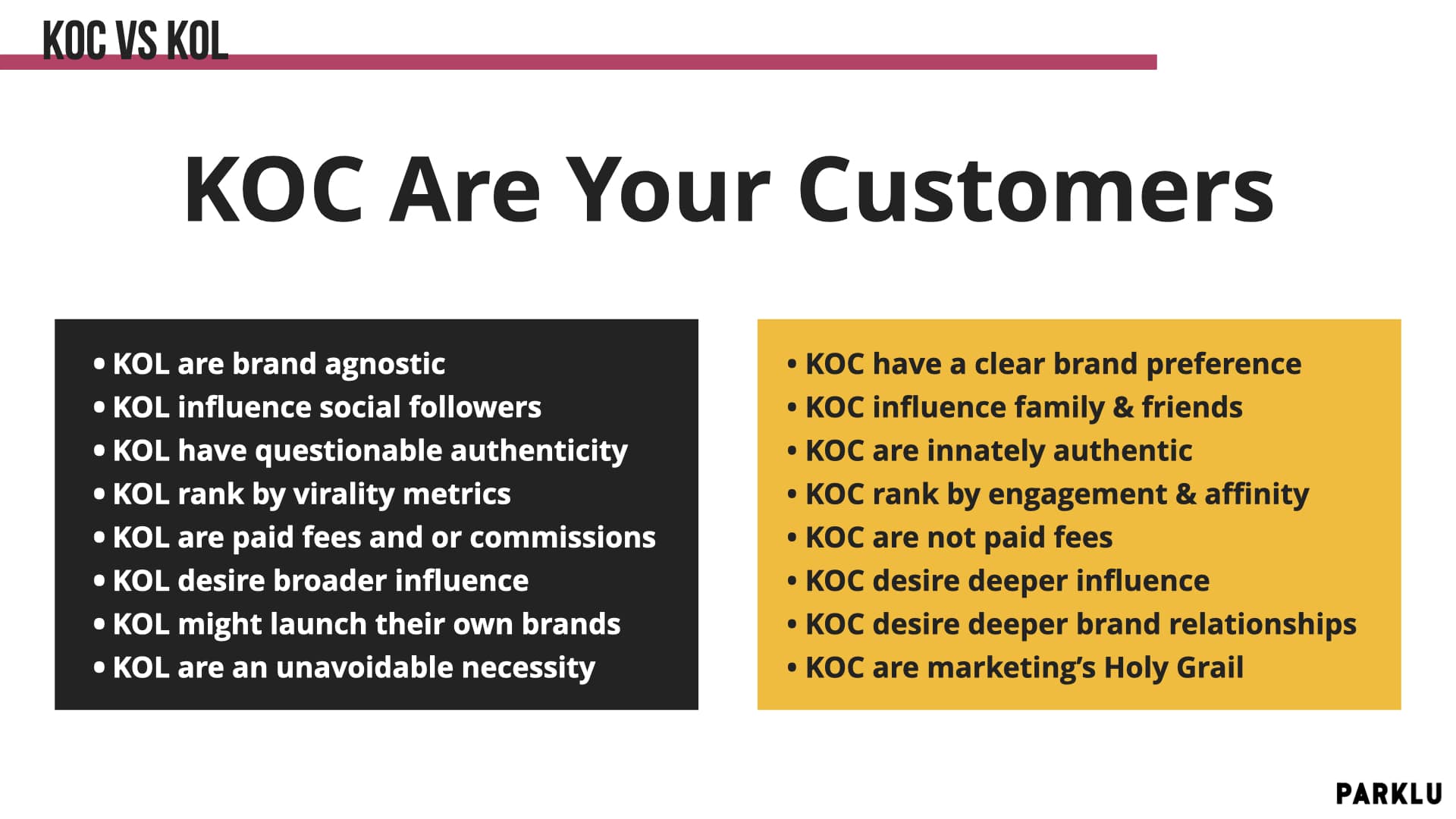
There are many comparisons made between KOLs and KOC, and it’s generally believed that KOC are a sub-category of KOL. However, KOC are quite different when compared with KOL. Whether it be Top-tier, Mid-tier, Micro, or Long-tail: KOL are in the business of building influence and monetizing influence. KOL might or might not truly love the brands they collaborate with, which occasionally brings their authenticity into question. KOC evangelize the brands or products they love because they want to help their family, friends, and colleagues make better purchase decisions. KOL leverage fan relationships and proclivities towards hierarchical conformity to influence buying behavior. KOC are the grassroots of broader customer norms and spark the flame of group affirmation. One of the most significant challenges to KOL marketing is scalability due to the fees and high-touch nature of managing campaigns, whereas KOC marketing strategies benefit from scales of economy.
One of the challenges KOC marketing presents to brands is the requirement to put advertising into the hands of consumers. Placing the weight of promotion on customers requires a reversal of some mentalities and processes. A brand must have a co-creational approach to advertising, which puts consumers in control. It is this relinquishing of control that can be the most concerning for brand managers. But in the age of social media dominance, it doesn’t matter what a brand says about itself; it matters what customers say about a brand.
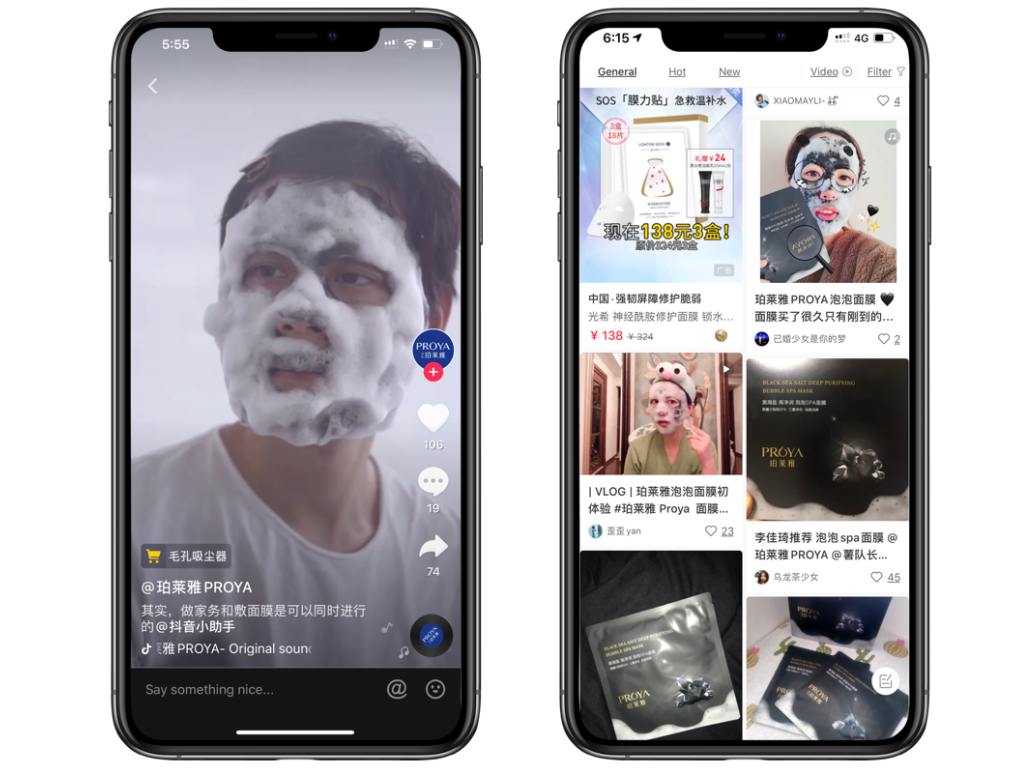
Case Study: Proya’s product elicits UGC
Proya spent two years researching and designing the Bubble Mask. The brand wanted to create a novel product that met both the Chinese consumers’ functional needs and could leverage the highly visual nature of social media. The mask was made to stimulate UGC sharing land product went viral. At peak hype, the Bubble Mask was first on Douyin’s official product recommendation list. Tmall featured the mask on its official mask list, and Proya’s Tmall flagship store sold 200M RMB last Double Eleven.
“Chinese consumers are placing increasing value on peer-to-peer product reviews prior to purchase. According to research by PWC, 54% of Chinese consumers seek to validate product quality through reviews, comments and feedback prior to purchasing compared to 47% globally, and 27% will write their own review of the product or experience after purchasing compared to 20% globally.” – PWC
How KOC Fit into the Cultural Equation
Guanxi, a social exchange mechanism built on mutual favors and a high-context culture, significantly impacts the Chinese’ buyer’s journey. Chinese customers have a greater need for implicit brand communication of value propositions, trust established through reciprocity, and relationship building. Because individual identity is rooted in group affirmation, acceptance of a brand or product requires broader approval. KOC check all the cultural sensitivity boxes that brands must consider to influence Chinese consumers.
Chinese consumers’ pragmatism also impacts the pace of change and acceptance of new products, especially when there is already a communally accepted incumbent product. Chinese customers’ desire for context increases the number of source information needed to make a decision, which increases brand touchpoints in the buyers’ journey.
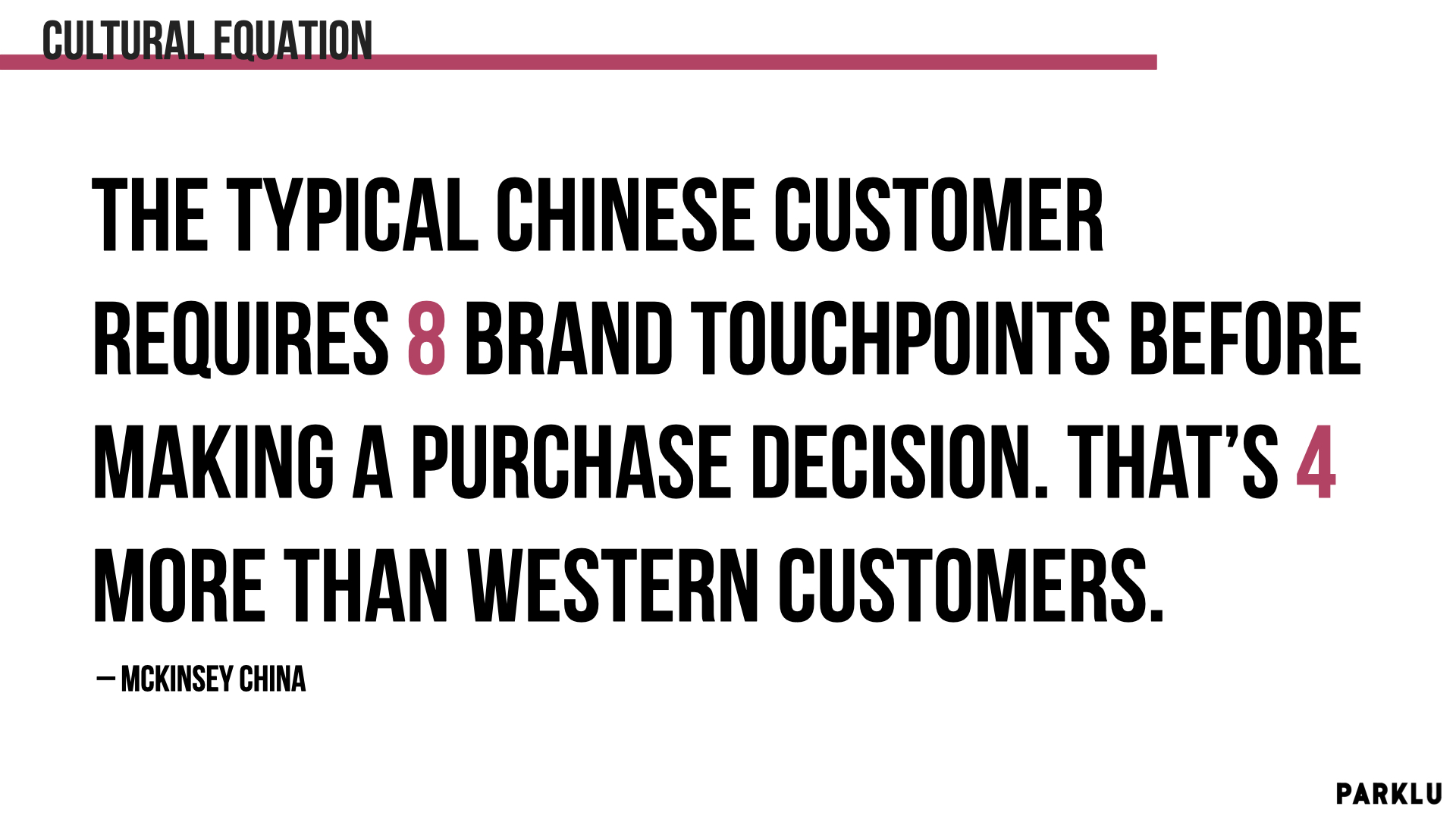
Each acquisition of a Chinese customer can be intrinsically more expensive when compared to the West. And so, each customer a brand acquires, especially in early growth stages, is that much more prized as each is critical to broader acceptance. Brands must maximize the value of every customer by leveraging cultural norms that drive propensities to remain loyal and advocate for the brands they choose.
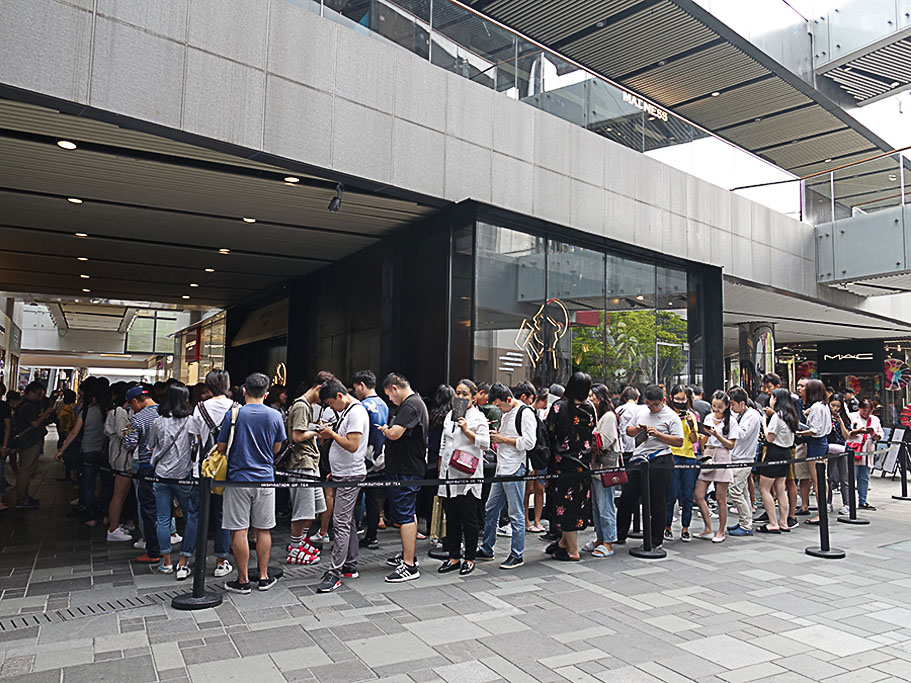
Case Study: Heytea queuing = group affirmation
Heytea is renowned in China for saving millions on marketing by leveraging word-of-mouth (WOM) among its young consumers. There is one marketing tactic used early by Heytea, which is a perfect example of group affirmation leading to interest and broader approval among customers. When a new store would open, Heytea would pay large groups of people to stand in line outside. These long lines piqued interest from passersby, created a sense of scarcity, but, more importantly, the people in these lines fabricated group affirmation. In this case, the customers in line were, in essence, KOC, and interestingly, it was the images of people waiting in line that went viral online.
“Word-of-moth creates more trust than any other source of information…” – Kantar
Getting KOC to Work for Your Brand
It is crucial to keep the authenticity of KOC as pure as possible. Therefore, KOC should not be driven solely by economic gains. Rewards for KOC should depend on the honesty and value delivered to other potential consumers. Brands can’t precisely control what KOC tell others, but brands can use incentives to shift KOC recommendations from casual to intentional. The goal is to reward KOC for communicating with potential customers in a way the brand can’t.
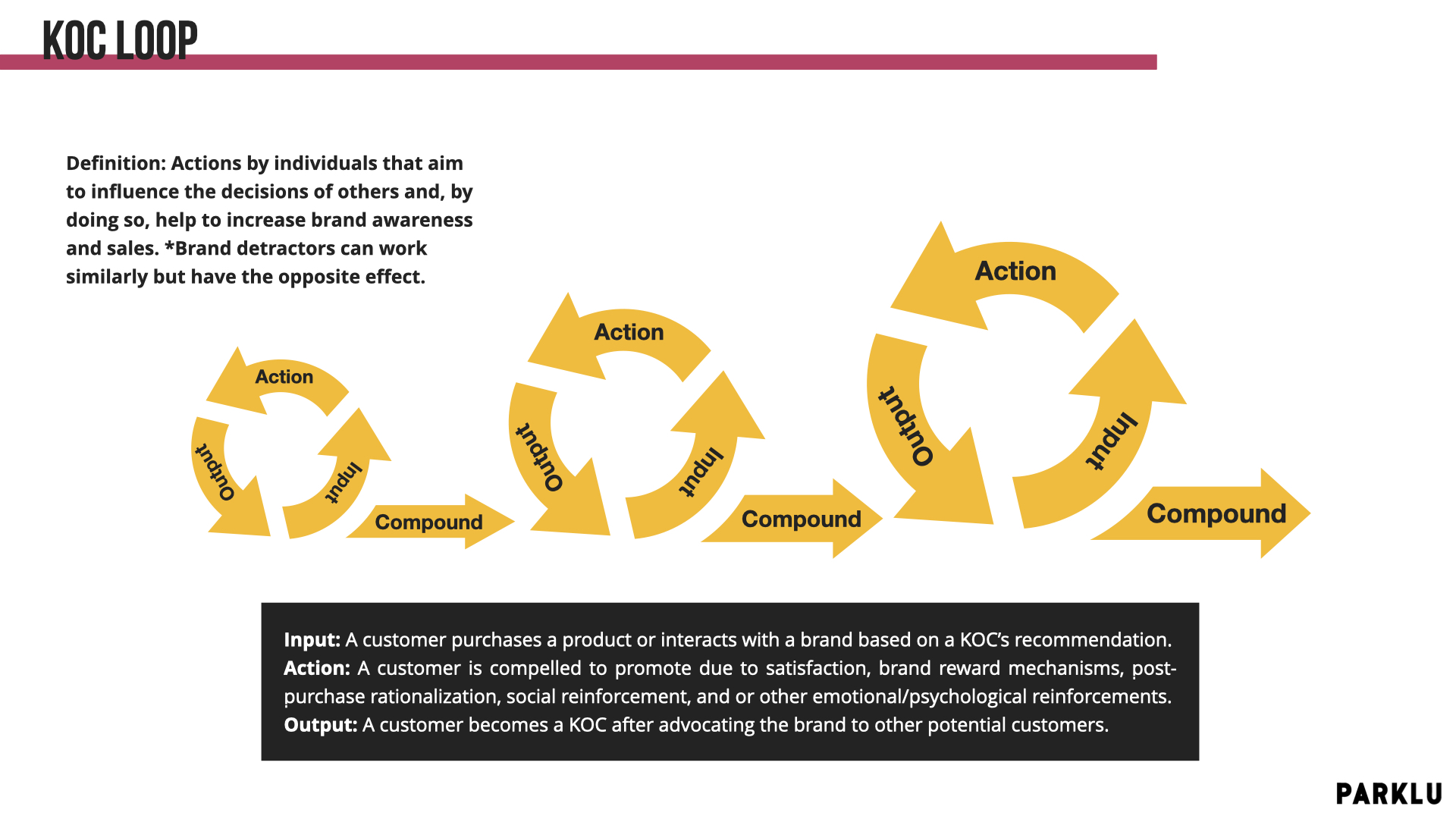
Organic KOC
Not all KOC need to be rewarded by the brand or will want to join an official KOL program. Organic KOC will be motivated by past satisfaction, post-purchase rationalization, and other emotional/psychological reinforcements. However, there are things a brand can do to increase organic advocacy.
Customer Service: Nothing trumps excellent customer service when it comes to developing KOC. Actively showing that your brand values each customer builds trust and affinity. It’s the tangible human-to-human interactions that make a brand real and increase the chances of customers recommending a brand.
Personalization: Whether it’s via communication with a customer or altering the product itself, personalizing a customer’s experience will make interacting with the brand uniquely special. It’s these special moments that can make the brand stand out and shareworthy.
Experiential Marketing: You can modify customer touchpoints in ways that create micro-moments specifically designed to trigger customers’ compulsion to share unique life events. This is especially impactful in physical interactions.
Contrived KOC
Some customers will only be motivated by tangible goals and rewards. That’s when incentives can be used to persuade these customers to advocate that otherwise would not. Creating KOC has four primary stages; identify, compel, track, and reward.
Identify: Set CRM triggers to highlight above average, loyal customers. Use social listening tools to identify customers that have above-average influence. Reach out to active brand community members.
Compel: Add advocacy incentives to existing loyalty programs. Develop an advocacy program to create a KOC cohort. Launch advocacy focused campaigns like rewarding referrals or group buying.
Track: Bind customers to assigned unique dynamic QR codes that track referrals. Utilize PARKLU’s new KOC Relationship Management (KRM) tools. Tracking KOC’s activity is essential for two reasons; brands need to know when to reward individual KOC and understanding the overall value of KOC to justify investing in the initiatives.
Reward: Employ a variety of physical and psychological rewards to motivate potential KOC. Discounts will drive some KOC and others will be motivated by recognition. It’s essential to have a range of rewards that can appeal to each potential KOC’s motivational factors.
“Tens of thousands of new products appear in the Chinese market each year, but up to 70 percent of the new products can survive no more than 18 months. Forty-four percent of FMCG brands claim that their number one challenge is the high acquisition costs with low return on investment.” – Nielsen
Measuring the ROI of KOC Marketing
It might be best to premise the question of KOC marketing ROI with a short story.

The entrepreneur and attention marketing guru, Gary Vaynerchuk, is in a boardroom pitching to the C-level executives of a potential client for his marketing agency VaynerMedia. One of the C-level executives keeps interrupting Gary to ask, “But, what’s the ROI?” After being interrupted several times, Gary looked at the executive and said, “What’s the ROI of your mother?”
For any of you that have watched Gary Vee on YouTube, you understand he has a crass way of communicating profound concepts. Gary then explained what he meant: Your mother kissed your booboos, tucked you in at night, cooked for you, prayed for you, disciplined you, and praised you. She was arguably the most crucial component of turning you into the person you are today with all the contributions you now make in the world. Your life is your mother’s ROI.
What single action that your mother took triggered your current performance? Which time did she nurse you back to health that elicited your charity? What evening was it when she forced you to study that induced your current ability to innovate? The reality is that no single action your mother took has resulted in the value you now produce. We can not measure the ROI of any single action of our mothers.
The same is true in commerce. To attribute a single brand action to revenue is foolhardy.
I know there is no freaking way businesses’ stakeholders will accept this story as a blind justification for investment. So we need to attempt to measure the value of KOC marketing. There are two primary ways to measure KOC ROI, which are not mutually exclusive.
Sales Attribution
The first measure of KOC ROI uses sales conversion attribution metrics. There are many ways a brand can track KOC sales referrals; some of the most straightforward utilize unique trackable discount codes or assigned sales portals. All sales conversions can then be traced to the source KOC and a conversion value can be attributed. This strategy should be part of a formal KOC Program that customers sign up to participate.
The issue with the sales attribution is that it commoditizes the brand/customer relationship. It will be challenging to scale this approach unless it’s managed by a platform or a multi-level marketing (MLM) business model. The reality is, not many customers want to hawk your shit. However, direct performance marketing minded management will like the tangible results of sales attribution.
There are lighter ways of doing sales attribution, but the journey is long, and it must be tracked with an advanced OMI-channel CRM. Tracking can be accomplished by having KOC refer people to follow the brand on social, become a community member, or attend an event. These referrals then need to be bound to the KOC in the CRM. Once referred contacts make a purchase, the sales value metric can be attributed.
As for the attributed value, there is flexibility. The simplest and fairest value to use is the average customer acquisition cost (CAC) calculated across all channels. This value can then be tracked as a Referral Lifetime Value (RLTV).
Media Value
It is a common practice at events to track the buzz created by attendees. Tracked metrics are posts, impressions, interactions, and the likes, with some monetary value attached to each metric. Similar to event campaigns where the awareness generated by attendees is given a value, an individual KOC can be measured as a unique advertising channel and given a value.
In the case of KOC generated awareness, brands can develop a media value metric. The challenge with establishing a media value metric for KOC is that the awareness generated by KOC is inherently more valuable than any other channel. Given time, the referral rate and LTV can be reverse calculated to establish a fair KOC Media Value (KMV). But until enough data is collected, brands will need to make some assumptions by placing some x multiple on a standard CPM or similar.
Final Thoughts on KOC Marketing in China
More so than international cross-border brands, domestic Chinese brands are perfecting the art of KOC marketing in China. The rewards of pursuing excellence in KOC marketing are huge, as it can deliver a sustainable and significant competitive edge that few other marketing approaches can match. Yet, some international brands will worry that KOC marketing remains immature as a discipline, others might argue that they can’t draw on extensive data or elaborate marketing tools fine-tuned over decades. For those with reservations about actively managing KOC, consider this: the incremental gain from outperforming competitors with superior programmatic ads, for example, is relatively small. That’s because all companies actively manage this traditional marketing activity, and all have similar knowledge. With so few companies actively managing KOC, the potential upside is exponentially higher.
Retention is the best customer acquisition strategy.
Brand marketers do not need another acronym; they need a paradigm shift in thinking. Key Opinion Customers (KOC) are often interpreted as Micro or Longtail-KOLs, and thus, many brands are developing strategies around a poor interpretation of a fundamental idea. Every brand has KOC. It’s what brands do or don’t do to leverage KOC that makes the difference.
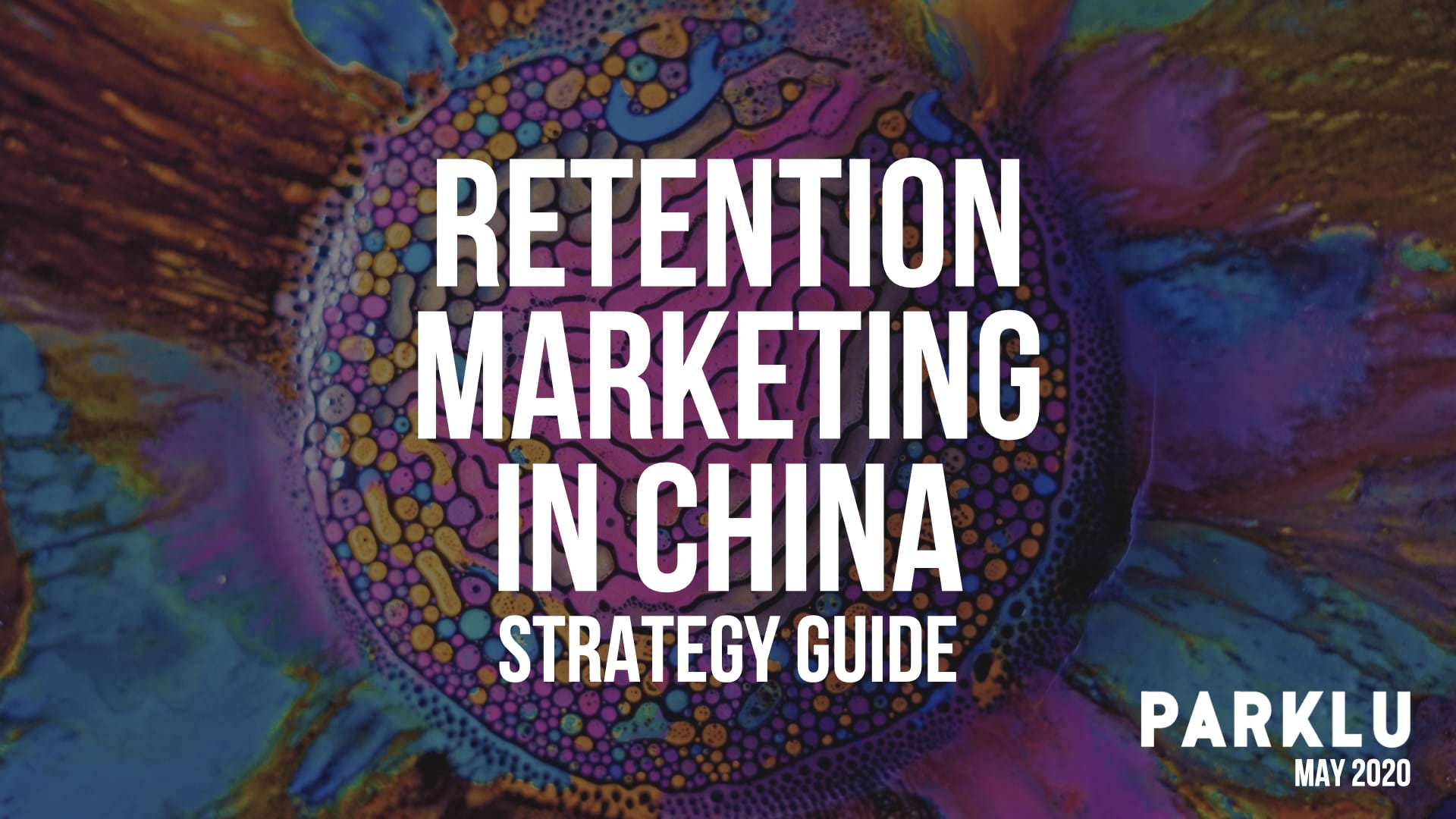

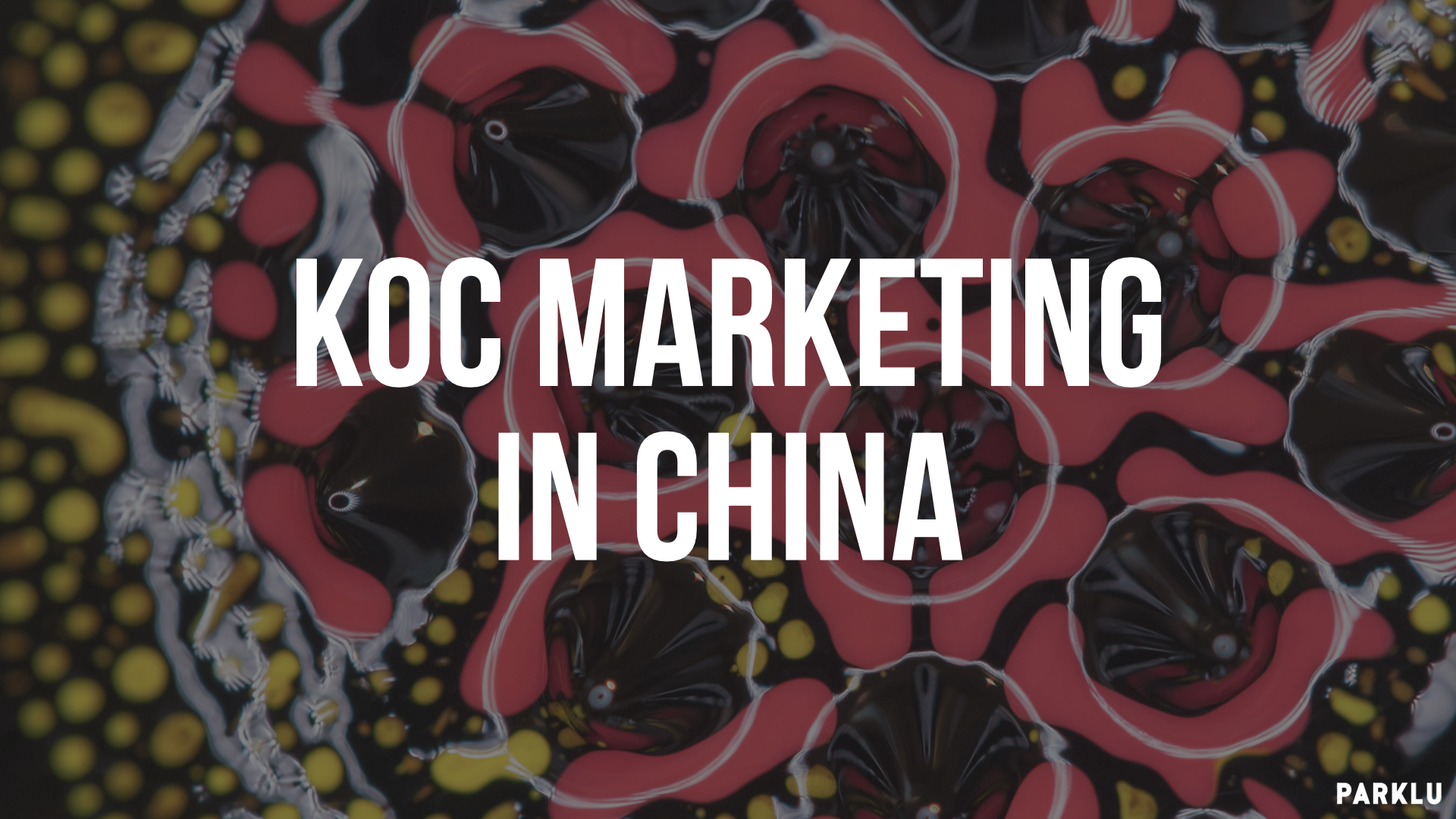
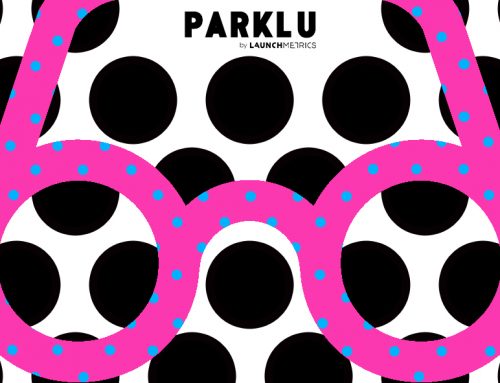
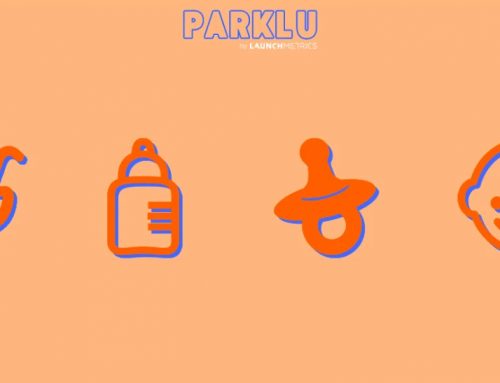


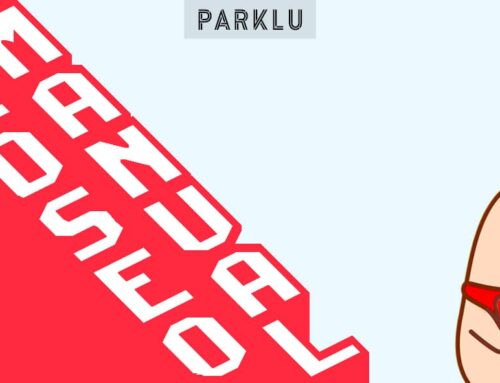
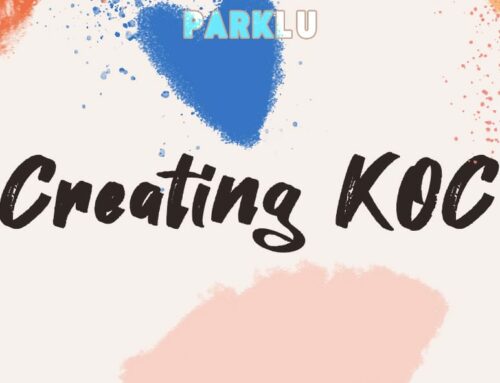

Leave A Comment